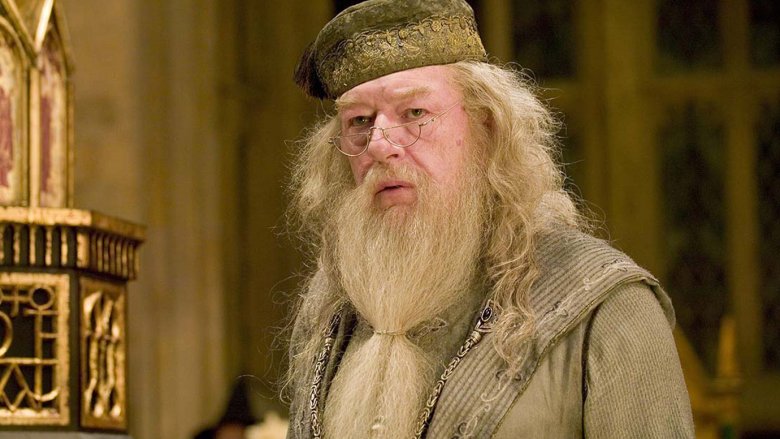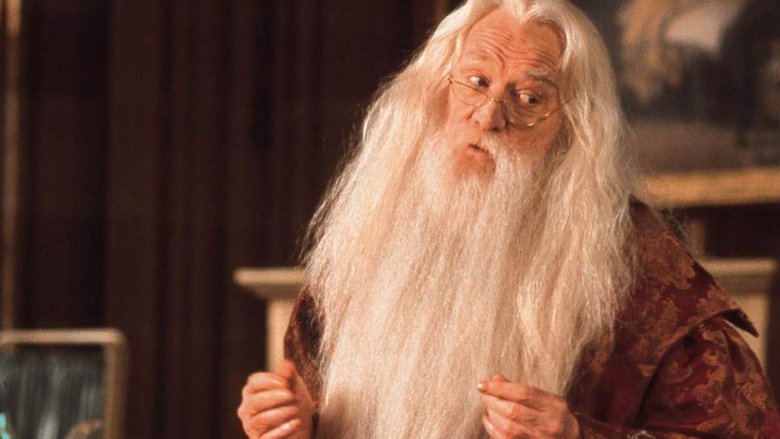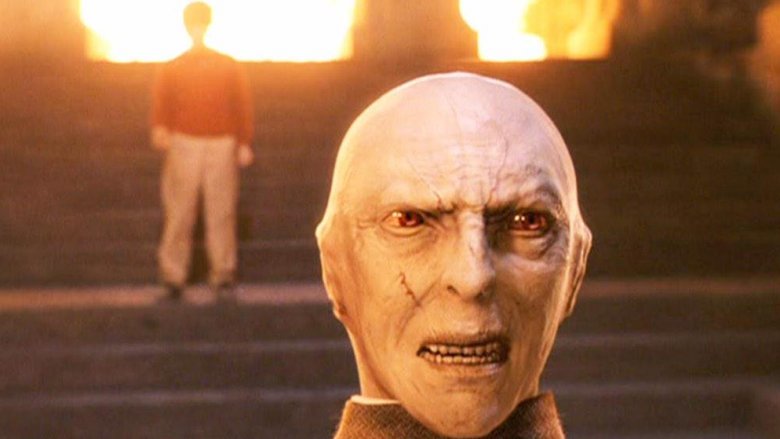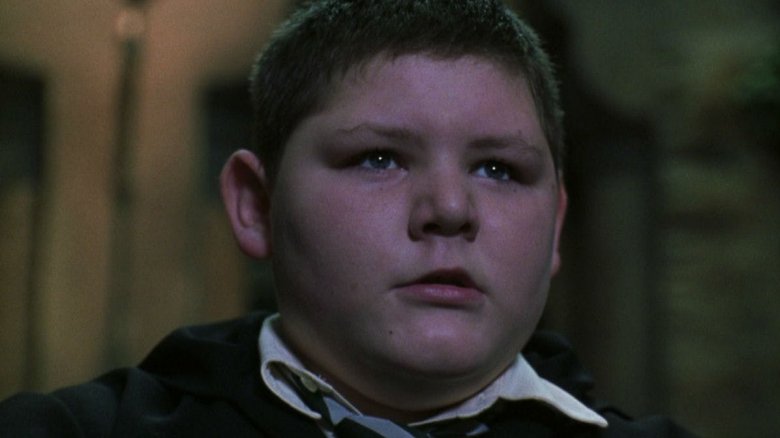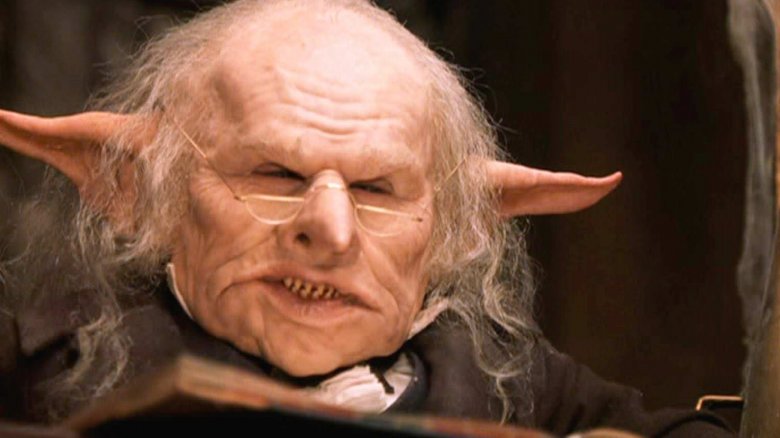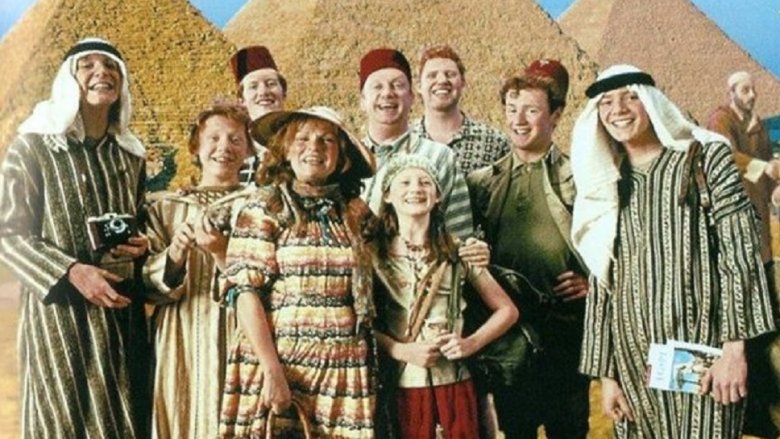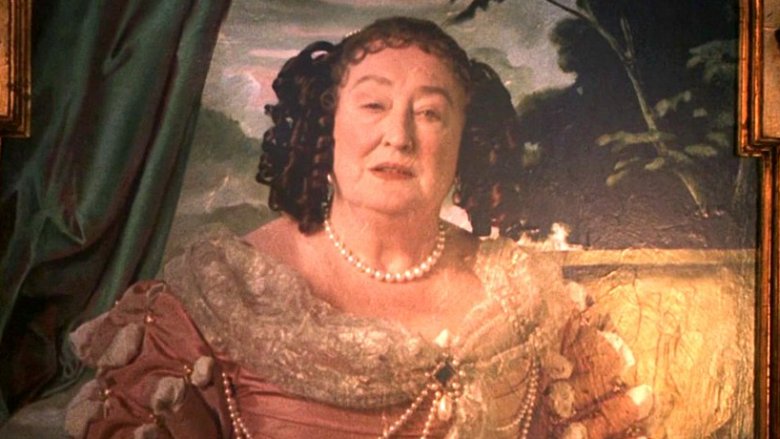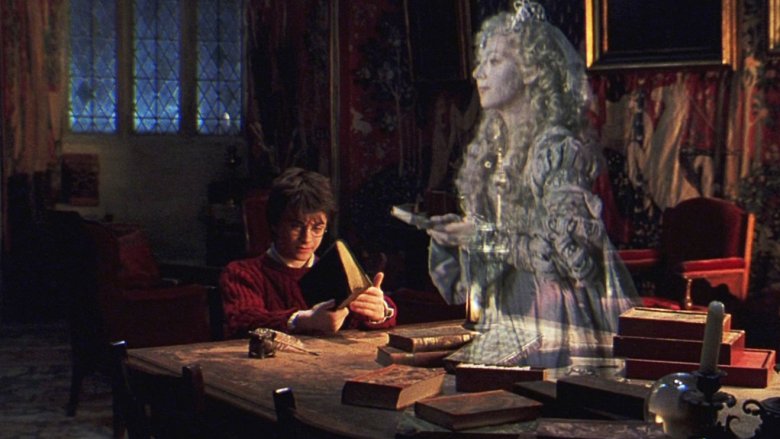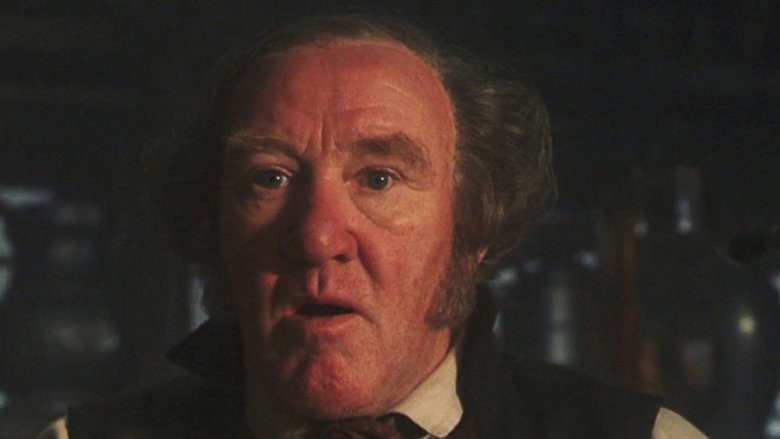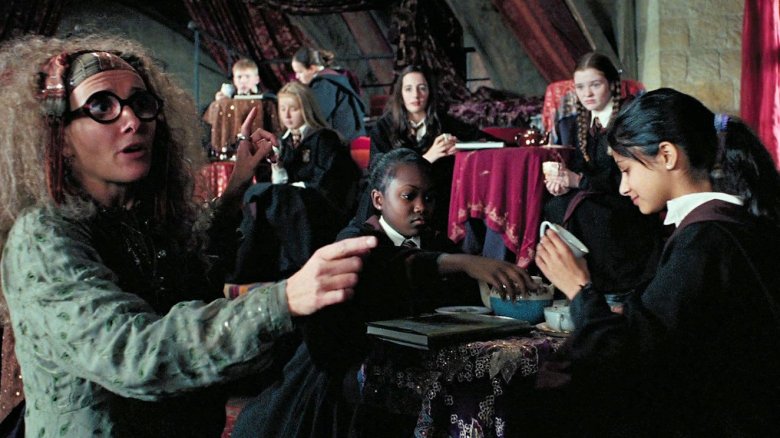Why These Harry Potter Actors Were Replaced In The Sequels
The Harry Potter books were a worldwide phenomenon even before J.K. Rowling's Wizarding World hit the big screen. From the moment Harry Potter and the Sorcerer's Stone began production, fans were eager to see how the filmmakers would bring Hogwarts and its characters to life. The movies rose to the challenge, conjuring a class of talented young newcomers, along with some of the most respected thespians of our times.
Most of the central cast got to stick around from start to finish, with many of the child actors even growing up right alongside their characters. However, there were several actors who were replaced along the way throughout the eight-film series as well. In some cases, it was simply a matter of the roles outgrowing their original stars, while some of the other cast replacements were caused by everything from a tragic death to legal troubles to a controversial whitewashing decision. Here are some of the major Harry Potter characters who were ultimately recast between films, and the stories of how these transfigurations came to be.
Richard Harris as Dumbledore
Although there are still plenty of Harry Potter fans who prefer Richard Harris' depiction of the Hogwarts headmaster, the role was recast ahead of the third film, Harry Potter and the Prisoner of Azkaban, after the two-time Oscar winner passed away in 2002 from Hodgkin's disease. Harris had expected that he might not be able to carry the character, which he took to please his granddaughter, to its cinematic end. He told the press, "I'll keep doing it as long as I enjoy it, my health holds out and they still want me, but the chances of all three of those factors remaining constant are pretty slim."
The part would eventually go to Michael Gambon, who starred in all six of the films to follow, but he wasn't the first major British star who was invited to don the heaping wig and decadent cloaks. Years after the fact, Sir Ian McKellen revealed that he, too, had a shot at becoming Albus Dumbledore but turned it down. He later explained on BBC's HARDtalk, "When they called me up and said would I be interested in being in the Harry Potter films, they didn't say in what part. I worked out what they were thinking, and I couldn't take over the part from an actor who I'd known didn't approve of me." Harris was reportedly unimpressed with McKellen during his life, implying that he was a "passionless" actor. Even so, though, McKellen added that he sometimes saw himself in the posters of Gambon as Dumbledore.
Richard Bremmer as Voldemort
When Lord Voldemort first appeared on-screen in Harry Potter and the Sorcerer's Stone, there wasn't much for the actor portraying him to do. After all, he was hidden behind Professor Quirrell's turban throughout the story, and even when he did emerge at the tail end of the movie, his face was still superimposed on the back of someone's skull. Richard Bremmer did what he could with the abbreviated role, but wasn't surprised when he wasn't invited back for the character's next major movie outing in the fourth film, Harry Potter and the Goblet of Fire, by which time the Dark Lord's power reached its peak (and so did the phenomenon of the franchise).
"The producers spent a long time fighting to get me so I'm very proud to have been the first. But the role is now being played by Ralph Fiennes, who is an old mate, in the fourth film," he later explained (via Digital Spy). "I've been in the business a long time and it didn't surprise me they just went for a bigger name, being Hollywood led, and I'm happy to pass it on to Ralph." Fiennes was already an A-lister with Oscar nominations for Schindler's List and The English Patient by the time the first film came out, so it's no surprise that the filmmakers didn't seek him out for that brief CGI appearance.
Jamie Waylett as Vincent Crabbe
As Draco Malfoy's pastry-loving henchman Vincent Crabbe, Jamie Waylett did a suitable enough job. The young actor, like many of his contemporaries in the series, was completely new to the world of film when he suited up as the Slytherin sycophant, but he gradually got more and more screen time throughout his six-film tenure and was convincing as the sniveling sidekick. By the time Harry Potter and the Deathly Hallows: Part 1 arrived, however, Gregory Goyle (Josh Herdman) was seen standing next to a new Malfoy lieutenant: Blaise Zabini (played by Louis Cordice, who'd made his debut in Harry Potter and the Half-Blood Prince).
Meanwhile, Crabbe was completely out of the picture—while the role itself wasn't recast, the character was shuffled out of sight to make room for Zabini—and it all stemmed from Waylett's off-camera run-ins with the law. Waylett was arrested in 2009 after he was caught growing marijuana plants in his mother's home. That incident alone was enough to lose him his prime position in the Potter world (though he was only sentenced to community service by the court), and the troubles would only continue for him. The actor was later arrested again in 2012 for participating in a riot, and this time, he faced jail time. At least one of his co-stars would publicly rise to his defense, but the damage was still done to the actor's career, and he hasn't worked in a single film since.
Verne Troyer as Griphook
The casting of the Harry Potter films was limited to British thespians—a rule so strict it even forced producers to turn down Robin Williams for the role of Hagrid—but Verne Troyer became the rare exception when he was cast as the Gringotts banker Griphook in Harry Potter and the Sorcerer's Stone. Troyer was the only American actor with a major role in the film, but the character was voiced by his English co-star Warwick Davis, who also portrayed Professor Flitwick and another bank teller in the film.
By the time Griphook became more significant to the story in Harry Potter and the Deathly Hallows, Davis took over the role completely. Davis later explained his decision to seek out the role. "Griphook has so much more depth to him than I'd ever been able to get into my work as Professor Flitwick. So, I went in and read for David Yates and the casting director, and gave them a best shot, David left a message that I'd got the part."
Richard Fish as Bill Weasley
Fans have to look pretty closely to spot Bill Weasley's real first appearance in the Harry Potter films, but in Harry Potter and the Prisoner of Azkaban, there is a photo of the Weasleys which includes Bill standing next to his fiery-haired family during a trip to Egypt. The actor who appears in the shot is Richard Fish, who said in an interview at the time that he'd hoped to reclaim the role if and when it was expanded in the subsequent films.
Despite his interest, though, the role was given to then-up-and-comer Domhnall Gleeson for Harry Potter and the Deathly Hallows. Gleeson later said on AOL's Build series that he had originally auditioned for a different role in the fourth film, Harry Potter and the Goblet of Fire, but was unsuccessful. When he followed his father Brendan Gleeson into work on the movie as "Mad-Eye" Moody, however, he was asked to work as a stand-in since he looked like the Weasley siblings, and he was later invited to come back and audition for the role of the eldest brother. "I got that role because I'm a ginger! Red hair was my only qualification!" he later told The Telegraph. "I was a Weasley waiting for a role." Of course, having a dad with connections obviously didn't hurt his chances, either.
Elizabeth Spriggs as the "Fat Lady"
When the "Fat Lady"—that is the unfortunate nickname of the Victorian-era woman in the moving portrait that opens the door to the Gryffindor common room—first appeared in Harry Potter and the Sorcerer's Stone, it was the celebrated actress Elizabeth Spriggs who portrayed her. However, Spriggs' portrayal was brief and rather rigid in blithely asking for the prefect's password, so before the character would return to enjoy a little more light-hearted screen time in Harry Potter and the Prisoner of Azkaban, the actress was replaced with someone experienced in being funny.
Instead of Spriggs, it was actress Dawn French who took on the role for the third film, bringing a more comedic element to the character as she desperately tries to impress the Hogwarts student body with her glass-breaking operatic skills, later ducking behind a neighboring painting's hippopotamus when things get dicey. French earned the role after her Harry Potter spoof for charity caught the attention of Christopher Columbus, who directed the first two movies and co-produced the third. "I think she's incredibly funny and her Harry Potter spoof for Comic Relief was pretty amazing," he told the BBC of the decision to cast her.
Nina Young as the Grey Lady
When the ghost of the Grey Lady first appeared in Harry Potter and the Sorcerer's Stone, no one could have predicted how important the character would later become. True to the first few books, she was originally depicted as just another one of the many poltergeists that pesters the students of Hogwarts, with actress Nina Young floating around in the CGI role. However, it would eventually be revealed in Harry Potter and the Deathly Hallows (which hadn't even been written when the first movie was shot) that she was so much more than some random apparition.
The Grey Lady was Rowena Ravenclaw's daughter Helena, who had given Tom Riddle access to her mother's diadem so that it could be made into one of his horcruxes. Considering the enhanced importance of the role that emerged in the later books, the film part was given to a more accomplished actress instead of its originator. Kelly Macdonald, who was tearing up the silver and small screens alike with her celebrated work in No Country for Old Men and Boardwalk Empire, stepped into the ghost's shoes to give them a little more gravitas in Harry Potter and the Deathly Hallows: Part 2. According to Pottermore, the actress had previously been considered for the role of Nymphadora Tonks.
Derek Deadman as Tom the Innkeeper
The Leaky Cauldron's chief barkeep Tom went through a sizable transformation between his first appearance in Harry Potter and the Sorcerer's Stone and his return for another Diagon Alley moment in Harry Potter and the Prisoner of Azkaban. His hair was all gone, for one thing, and he looked a lot less stout.
The reason is that actor Derek Deadman did not return to the role for film three, and it was filled by Jim Tavare. Though Deadman was an accomplished actor before stepping into the world of witchcraft and wizardry, he largely left the movie scene after the first Harry Potter and only appeared in one film afterwards before passing away in 2014 from complications associated with his diabetes. Although it's unclear whether Deadman chose to step away from the role, incoming director Alfonso Cuaron did want to darken up the atmosphere in Azkaban and even instructed Tavare to play the role like Igor from Young Frankenstein, which may mean that Deadman's chipper persona was no longer a good fit.
Jennifer Smith as Lavender Brown
Although several of the actors portraying minor and background Hogwarts students came and went throughout the Harry Potter films, the recasting of Lavender Brown proved to be highly controversial. In Harry Potter and the Prisoner of Azkaban, it was black actress Jennifer Smith who sported the Gryffindor character's robes. Shortly after the film's release, J.K. Rowling debuted her sixth book, Harry Potter and the Half-Blood Prince, which gave the character a much more central role than she had ever had before.
By the time that installment was adapted for the screen, it was a white actress named Jessie Cave who stepped into the part of Ron ("Won-Won")'s would-be love interest, which resulted in many crying foul over the choice to replace Smith before she could have more meaningful screen time. There was no specific description of the character being white in the books, and even if there was, some people didn't think it was necessary to replace her, especially since it seemed to imply that the character wouldn't be lovable unless she was as pale as Ron. For what it's worth, that wasn't the last time the Harry Potter franchise would be accused of under-representing people of color.
